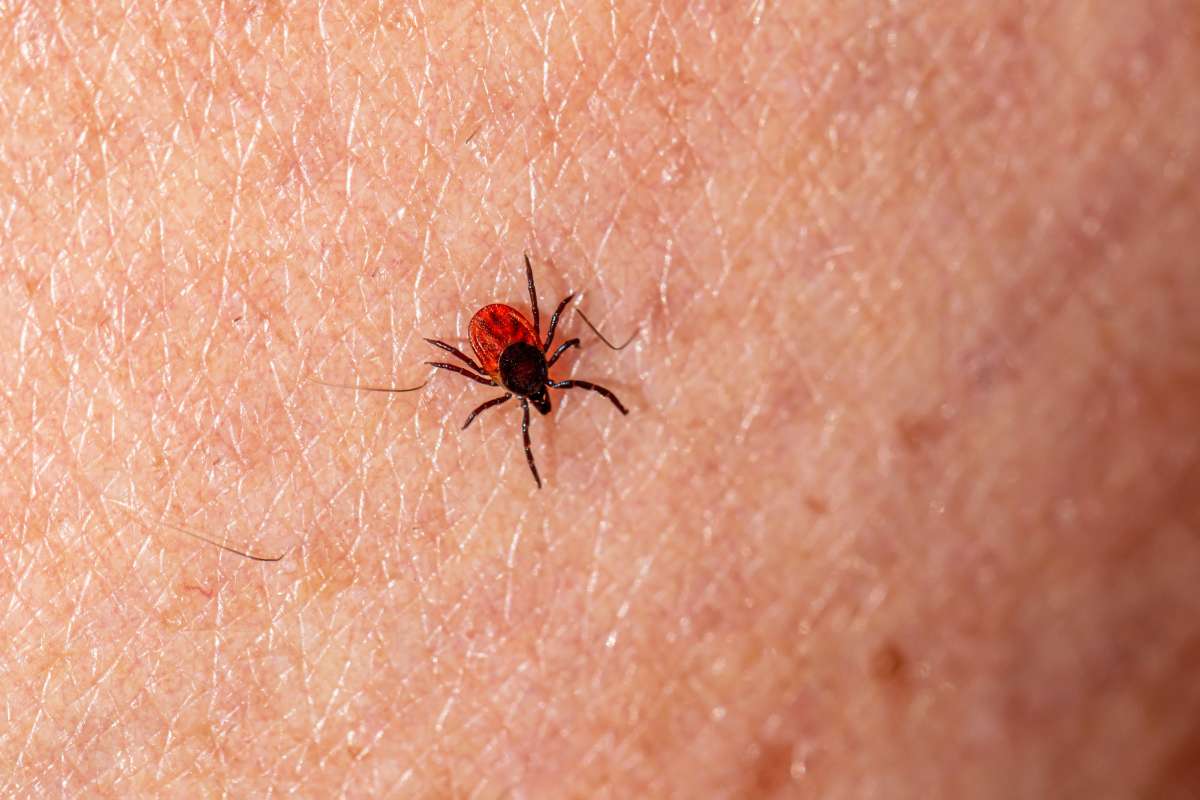Tick bites can be a nightmare for pet owners, especially in Australia, where dangerous species like the Australian paralysis tick are prevalent.
Both dogs and cats in Australia are susceptible to ticks, and these parasites can cause serious health issues.
Understanding what to do if you find a tick on your dog and how to prevent tick infestations is essential to keeping your pet safe.
In this guide, we will cover everything you need to know about identifying ticks, how to safely remove them, and steps to prevent ticks from latching onto your dog.
Let’s get straight to the point
If you find ticks on your dog, it’s crucial to act quickly. In Australia, dangerous species like the paralysis tick can cause severe health problems, including paralysis and even death.
Regularly check your dog, especially if they roam in tick-prone areas. To remove a tick, use tweezers, avoid twisting, and monitor for symptoms like weakness, vomiting, or breathing issues.
Prevent ticks through regular checks, tick prevention products, and maintaining your yard. Seek immediate veterinary care if your dog shows symptoms of tick paralysis, and consult your vet for the best prevention strategies.

Ticks That Infest Dogs
Ticks that infest dogs are common in Australia, and recognising their appearance is crucial for dog owners. There are three main species of ticks that can affect dogs in Australia:
Paralysis Tick
The paralysis tick is the most dangerous species found in Australia.
These ticks are primarily located along the east coast, from Cape York to Lakes Entrance, and are responsible for transmitting a toxin that causes paralysis in dogs and cats.
Paralysis ticks are highly dangerous and can be fatal if not dealt with promptly.
Brown Dog Tick
The brown dog tick can be found across Australia. While it does not paralyse its host like the paralysis tick, it can cause severe skin irritation and lead to significant blood loss. In extreme cases, this can cause anaemia in dogs.
Brown dog ticks can also transmit Ehrlichia canis, a serious disease that was discovered in Australia in 2020.
Bush Tick
Bush ticks are found in parts of eastern and western Australia. While not as dangerous as paralysis ticks, bush ticks can still transmit harmful diseases and cause irritation. Prompt removal of bush ticks is necessary to avoid potential complications.
How Do Ticks Get On Dogs?
Ticks usually attach themselves to dogs when they come into contact with vegetation, such as shrubs or grass.
Ticks detect the warmth and carbon dioxide from your dog’s body and wait for an opportunity to attach. Dogs that roam in bushy areas or grassy fields are at higher risk of coming into contact with ticks.
While ticks can latch onto dogs year-round, the risk is highest during the spring and summer months. Once a tick is on your dog, it will crawl into the fur and seek out a suitable place to feed.
Tick Symptoms in Dogs
The symptoms of tick bites can vary depending on the species of tick and the severity of the bite. Common symptoms include:
- Skin irritation: Redness, swelling, or itching at the site of the tick bite.
- Anaemia: In severe cases, particularly with brown dog ticks, significant blood loss can occur.
- Paralysis: This is a life-threatening symptom caused by the paralysis tick, and it may start with weakness in the hind legs, progressing to full immobility if left untreated.
- Voice changes: A dog bitten by a paralysis tick may experience changes in their bark or voice.
- Vomiting and nausea: Dogs bitten by ticks may lose their appetite, vomit, or experience lethargy.
- Breathing difficulties: Paralysis ticks can also cause rapid or laboured breathing.
If your dog exhibits any of these symptoms after a tick bite, seek veterinary care immediately.
How to Check Your Dog for Ticks
Checking your dog for ticks regularly is essential, especially if they spend time in tick-prone areas. Ticks are often found around the head and neck area, but they can attach anywhere on the body. Here’s how to thoroughly inspect your dog:
- Run your fingers through their fur: Feel for any unusual lumps or bumps on their skin.
- Examine common tick locations: Check between your dog’s toes, under their arms, around their ears, and along their tail.
- Look carefully under the fur: Sometimes ticks can be hard to spot, especially on dogs with long or thick fur.
By making regular tick checks part of your routine, you can catch any parasites early before they cause serious harm.
How to Safely Remove a Tick from Your Dog
If you find a tick on your dog, it’s important to remove it as quickly as possible. Here’s a step-by-step guide to safely remove a tick from your dog:
- Use tweezers or a tick removal tool: Grasp the tick as close to your dog’s skin as possible, aiming for the tick’s head or mouthparts.
- Pull gently but firmly: Avoid twisting the tick, as this can cause its mouthparts to break off and remain embedded in the skin.
- Dispose of the tick: Place the tick in a sealed container so your vet can identify the species if necessary.
- Monitor your dog: After removing the tick, watch your dog for signs of illness or tick paralysis over the next few days.
If you’re unsure how to remove the tick or are concerned about your dog’s health, consult your vet for assistance.
Can Dog Ticks Infest Your Home?
Ticks can occasionally infest homes, especially brown dog ticks, which are capable of reproducing indoors.
These ticks can spread diseases such as canine babesiosis, ehrlichiosis, and anaplasmosis, all of which are dangerous to dogs.
If your home becomes infested with ticks, it’s crucial to act quickly. Thoroughly clean your home, treat your pets with appropriate tick prevention treatments, and consult with a pest control professional if necessary.

Tick Prevention for Dogs
Prevention is the best defence against ticks. There are several ways to reduce the risk of tick bites:
Regular Tick Checks
Checking your dog for ticks after walks or outdoor play is a simple but effective way to catch ticks early before they can cause harm.
Tick Prevention Products
Using tick prevention products is essential if your dog spends time in tick-prone areas. There are various options, including:
- Tick collars
- Spot-on treatments
- Oral medications
Consult your vet to choose the best tick prevention method for your dog.
Yard Maintenance
Keeping your yard tidy can help reduce the risk of ticks. Regularly mowing the lawn, trimming bushes, and clearing away leaf litter can make your yard less attractive to ticks.
What to Do if Your Dog Shows Symptoms of Tick Paralysis
If you suspect that your dog has been bitten by a paralysis tick and is showing symptoms like difficulty walking, vomiting, or laboured breathing, seek immediate veterinary attention.
Tick paralysis can be fatal if not treated promptly, but early intervention can save your dog’s life.
Can Humans Get Ticks from Dogs?
While it’s uncommon for humans to get ticks directly from dogs, it’s possible for ticks to transfer to humans from infested environments. Tick paralysis in humans is rare but can occur, particularly in young children.
If you find a tick on yourself or a family member, remove it promptly using the same method as for dogs, and consult a doctor if you experience symptoms like fever, rash, or flu-like symptoms after a tick bite.
Conclusion
Ticks are a serious threat to dogs in Australia, with species like the paralysis tick posing life-threatening risks.
Regular tick checks, using tick prevention products, and knowing how to safely remove ticks are all vital steps in keeping your dog healthy.
Always consult your vet if you suspect your dog has been bitten by a tick, especially if they show signs of tick paralysis.
By staying vigilant and proactive, you can protect your dog from the dangers of ticks and ensure they remain happy and healthy.
Frequently Asked Questions
Why do I have ticks in my house?
Even if only one tick enters your house, you may soon have an infestation. It is best to avoid brushing up against ticks in wooded or bushy areas, as they thrive in damp, humid environments.
They like to do it close to things like baseboards, window and door frames, pieces of furniture, the fringe of rugs, and the edges of curtains. If this goes unnoticed or untreated, it can quickly spread into an infestation.
Bed bug bite vs. tick bite: What’s the difference?
The main distinction between a tick bite and a bed bug bite is that the latter is a one-and-done occurrence, while the former is a repeat offender.
Anywhere a bed bug can get to skin is fair game. However, ticks are most at home in warm, humid places like armpits and groynes. It will attempt to burrow under the skin once it has attached.
How fast do ticks reproduce?
Incubation periods for tick eggs can last anywhere from two weeks to two months, which might lead you to believe that ticks have a slow reproductive rate.
The problem is that each tick nest can contain hundreds, if not thousands, of eggs, and once those eggs hatch, you can have a serious pest infestation.
How long can a tick live in your house?
The only factor in determining a tick’s lifespan is whether or not it is fed. Without the right conditions, an unfed tick will die within 24 hours, and even a tick that has recently fed has a very low chance of surviving more than 2-3 days.
How do you get rid of ticks on dogs?
To remove ticks from a dog, you’ll need tweezers, disinfectant, and maybe some assistance from a buddy if your dog is likely to wriggle.
Pull the tick’s head out of the dog’s skin with the tweezers. To raise, lift up firmly and steadily.
Disinfect the region where the tick was removed to reduce the risk of infection. Iodine is what you should use, per our advice.

